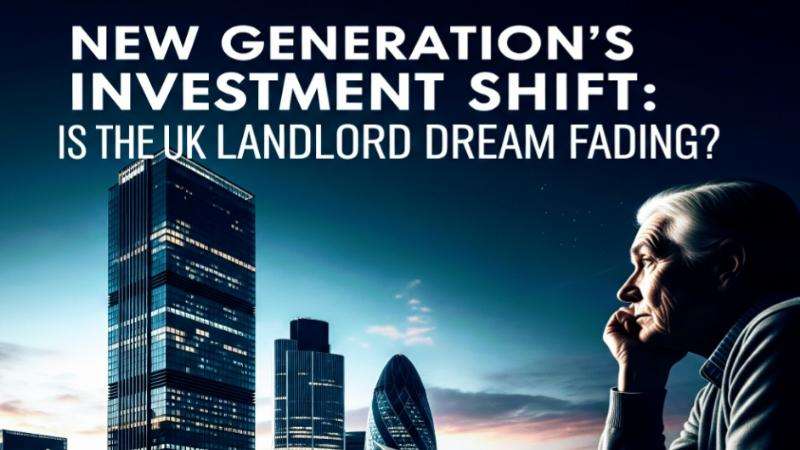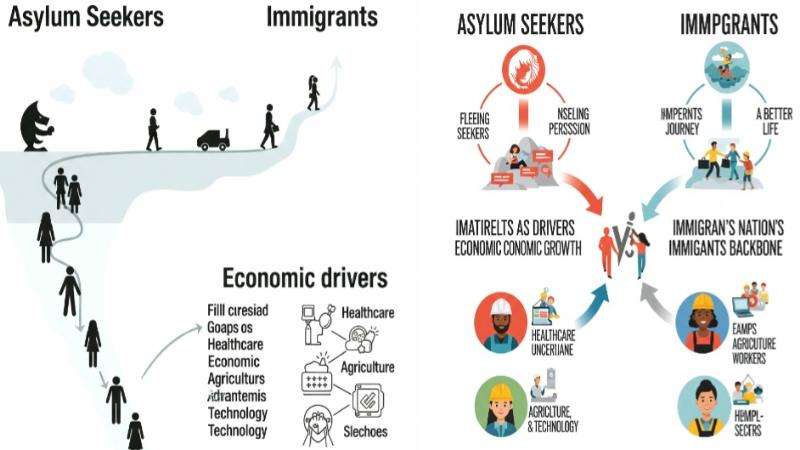A fundamental shift is underway in the UK's housing market, with a noticeable trend suggesting that the new generation is increasingly shunning the traditional "buy-to-let" landlord model in favour of more diversified, direct investment avenues. This evolving perspective is being shaped by a complex interplay of economic pressures, changing financial priorities, and a growing sophistication in wealth-building strategies, Daily Dazzling Dawn understands.
For decades, acquiring property, particularly for rental income, was seen as a bedrock of wealth accumulation in the UK – a seemingly secure and reliable investment. However, today's landscape is markedly different. Soaring property prices, stringent mortgage regulations, a reduction in tax advantages for landlords, and the relentless rise in the cost of living have collectively reshaped this once-lucrative path. For many young people, the challenge is no longer just about acquiring a second property for investment, but simply getting their foot on the first rung of the property ladder for their own homes.
The traditional appeal of becoming a landlord, which promised passive income and steady capital appreciation, has been significantly eroded. The sheer financial barrier to entry, with larger deposits and higher mortgage repayments, makes acquiring additional properties increasingly daunting. Government reforms, including changes to mortgage interest tax relief and increased stamp duty for second homes, have directly impacted landlord profitability. Furthermore, rising interest rates, coupled with escalating maintenance costs and growing regulatory burdens, mean that profit margins for landlords have tightened considerably. Many young people are now part of "Generation Rent," with a substantial portion of their income consumed by rent, leaving little capacity for saving a deposit, let alone investing in a rental property.
This has prompted a shift towards diversified investment. Younger generations are increasingly aware of alternative avenues beyond property, such as stock market investments, ISAs (Individual Savings Accounts), and other financial products. These are often perceived as more liquid, less management-intensive, and capable of offering competitive returns without the administrative headaches associated with property ownership. Indeed, recent reports indicate a decline in landlord purchases, with some even considering selling due to unmanageable costs, suggesting a broader reassessment of property as a primary investment vehicle.
While the overall trend points away from buy-to-let for many, some data suggests a nuanced picture in who is buying houses. Paragon Bank research indicates that the average age of new buy-to-let landlords is indeed dropping, with a notable increase in mortgages taken by those in their 30s. Even younger individuals, aged 18-30, are carving out a larger share, suggesting that for those with the financial means, property investment, perhaps as a primary wealth-building strategy, remains an attractive option.
However, when examining homeownership – buying a home to live in – across different ethnic groups, the picture becomes more complex. Government statistics (April 2021-March 2023) show an overall UK homeownership rate of 65%. While White households lead at 68%, Asian households stand at 56%, with significant variations within this group. Indian communities show a high homeownership rate of 68%, and Pakistani at 55%.
The most striking disparity lies within the British Bangladeshi community, where homeownership stands at just 37%. This significantly trails the national average and other South Asian groups, highlighting specific and deep-seated challenges. Poverty remains a major barrier; a Joseph Rowntree Foundation (JRF) report from early 2025 revealed that 56% of people in Bangladeshi households were living in poverty in 2022-23. This economic vulnerability directly impacts the ability to save for deposits and afford mortgage repayments.
Furthermore, British Bangladeshi households are disproportionately affected by overcrowding, being 12 times more likely to experience it than White British households. This points to a struggle to find suitable and affordable housing, especially for larger families. The high cost of living and property in urban centers like London, where a significant portion of the British Bangladeshi community resides, further exacerbates the issue, with homeownership rates notably lower in these areas compared to outside the capital. The JRF also highlighted the majority of Bangladeshi households' reliance on rented accommodation, which can unfortunately lead to persistent deep poverty due to higher housing costs.
In essence, while a segment of the younger generation with existing capital may still pursue property investment, the prevailing narrative for many is a struggle to achieve even basic homeownership. The perception of property has evolved from an almost guaranteed route to wealth to a more challenging financial landscape where alternative investments offer different benefits. For communities like the British Bangladeshi, addressing fundamental socioeconomic disparities and improving housing affordability remain critical steps to boosting homeownership rates, beyond the broader trends in property investment.








.svg)


